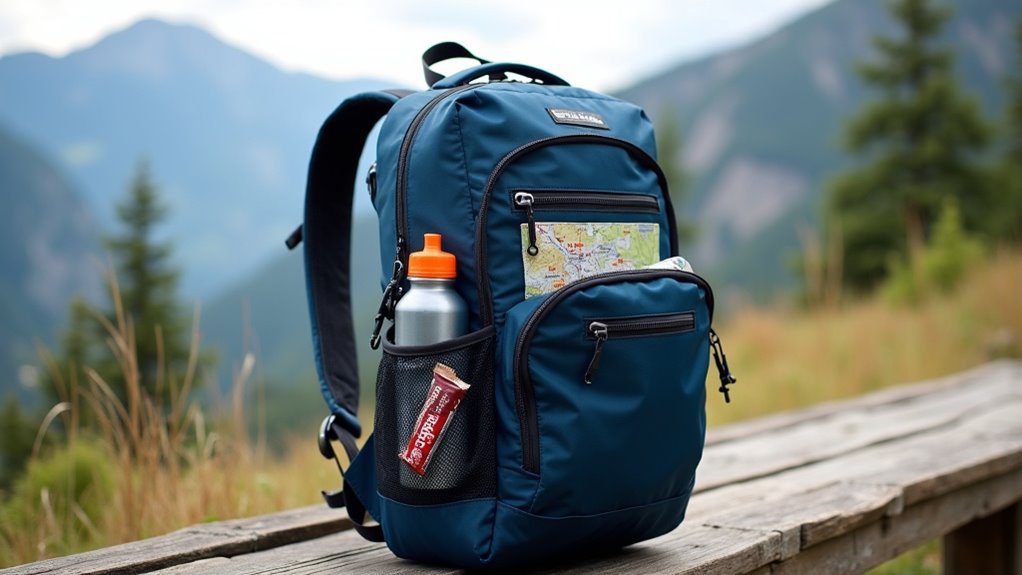When backpacking, you’ll want to wear moisture-wicking layers such as synthetic or wool shirts, lightweight hiking pants or shorts, and quick-dry underwear and socks to manage sweat and prevent blisters. Sturdy, waterproof boots or trail shoes are essential for rough terrain, while a sun hat, rain jacket, and insulating layers like fleece or down provide effective protection against weather changes. You should also pack gloves, warm hats, and rain gear if conditions demand, as there’s more to take into account for a successful trip.
When planning a backpacking trip, what you wear can greatly impact your comfort, safety, and overall experience on the trail. Choosing the right clothing begins with selecting shirts and tops suited for the conditions. In warm weather, opt for lightweight, breathable T-shirts made from synthetic or merino wool materials, as they wick moisture and dry quickly.
The right clothing choices on the trail can make all the difference for your comfort, safety, and enjoyment while backpacking.
For colder temperatures or extended sun exposure, long-sleeve shirts are necessary; some feature UPF 50+ for reliable sun protection. Base layers, such as thermal tops, are essential in cold conditions, allowing you to layer for warmth. Layering is key for thermoregulation and sweat management, so bring tops, bottoms, jackets, and accessories that complement each other. Insulating layers like fleece or down jackets help retain heat during chilly evenings or early mornings. Lightweight tops dedicated to sleepwear keep you clean and comfortable at camp. Avoiding cotton clothing is a key rule, as it absorbs moisture and dries slowly, increasing the risk of discomfort or even hypothermia in changing weather.
When it comes to pants and shorts, lightweight synthetic hiking pants provide durability and versatility across various terrains. Convertible pants can be transformed into shorts, offering adaptability to changing weather. Hiking shorts are ideal for hot conditions, while yoga pants or tights provide comfort around camp, though they’re less durable on rugged trails.
Rain pants are important for staying dry during wet conditions, and long underwear can be layered underneath for added warmth. Weather-resistant outerwear is essential for protection against unexpected elements during your backpacking adventure.
You’ll need to pay close attention to undergarments and socks. Quick-dry underwear is necessary, as it wicks moisture and keeps you comfortable. Choose moisture-wicking socks to prevent blisters and guarantee quick drying; always bring extra pairs, including warm socks for camp. Bras should be supportive and moisture-wicking. For colder trips, long underwear adds a significant layer of warmth.
Selecting proper footwear and accessories is essential. Sturdy, waterproof hiking boots or shoes protect your feet across challenging terrain, while trail running shoes serve as lightweight alternatives for easier routes. Sandals are useful for water crossings, and gaiters prevent debris from entering your boots. Hiking poles can help with balance and support on uneven ground.
To protect your head and hands, pack a sun hat, sunglasses, and sunscreen for sun protection. Cold conditions call for a warm hat and gloves. For rain and wind, bring a rain jacket, windbreaker, rain pants, and rain mitts. A waterproof backpack cover safeguards your gear.
At camp, warm sleepwear, camp shoes, and insulated layers guarantee a restful night.









